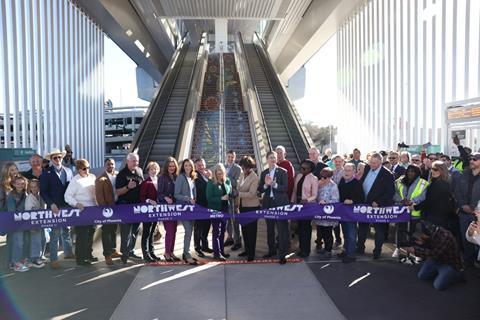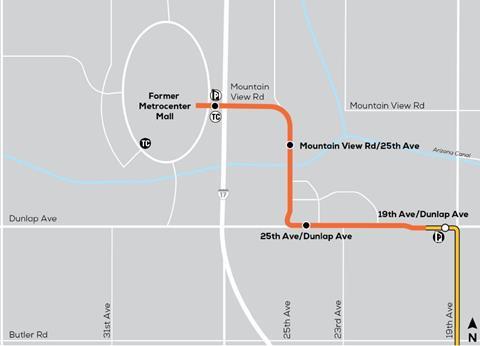
USA: ‘We have made the leap over one of our busiest and most vital freeways with a bridge that opens the door to the West Valley’, said CEO of Phoenix’s Valley Metro Jessica Mefford-Miller when celebrations marked the opening of the Northwest Phase II light rail extension on January 27.
As well as the bridge taking the line over the I-17, the 2·6 km extension from 19th Ave/Dunlap has three stops including the network’s first elevated stop at the Metro Parkway terminus. This is part of the Thelda Williams Transit Center, which provides an interchange with bus services.
There is a multistorey car park with solar panels, and nine artworks along the route designed to reflect the character of the local community.

The extension was built by a joint venture of Kiewit and McCarthy, with construction starting in 2020. Federal Transit Administration Administrator Nuria Fernandez said ‘this was the first project funded by FTA under President Biden’s Bipartisan Infrastructure Law and the city and Valley Metro have done incredible work building it on budget and delivering the project earlier than expected.’
The extension is expected to attract an initial 1 400 new daily riders.

‘This extension has been part of Phoenix’s transit vision for more than two decades’, said Mayor Chair Kate Gallego. ‘Light rail has changed the way our community travels, fostering mobility freedom and economic opportunity across our county.’
| Valley Metro Northwest Phase II extension funding | |
|---|---|
| $158m | FTA capital investment grant |
| $213m | City of Phoenix T2050 funds |
| $30m | Proposition 400 sales tax for regional transport |
Congressman Greg Stanton said the project represents ‘years of hard work, at the city, county and federal level’. He said ‘there is no question light rail has been a resounding success — not just as a way to move people, but as an economic development tool. Phase II is going to connect residents in the West Valley to jobs and education in central Phoenix, and all the way to Tempe and Mesa.’



